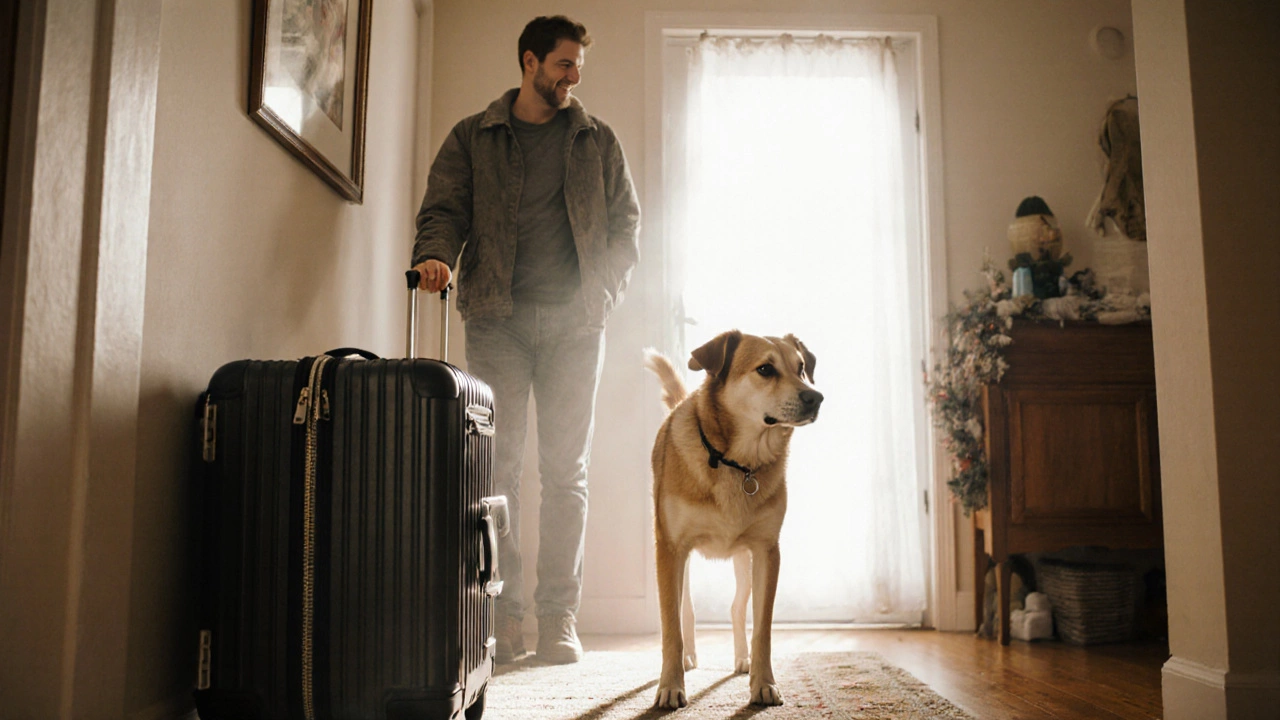Managing Dog Loneliness: Real‑World Strategies for a Content Canine
When dealing with managing dog loneliness, the goal is to ensure a dog feels safe, entertained, and emotionally balanced even when the owner isn’t home. Also called dog alone time management, it covers everything from routine planning to environmental enrichment. Understanding this helps you pick the right tools and habits to keep your furry friend from feeling abandoned.
Why Separation Anxiety Matters
One of the biggest triggers of loneliness is dog separation anxiety, a stress response that appears when a dog is left alone or separated from its family. Recognizing the signs—excessive barking, destructive chewing, or pacing—lets you intervene early. Addressing separation anxiety is a core part of managing dog loneliness because it reduces panic and builds confidence. Simple steps like gradual desensitization and leaving a comforting scent can make a big difference.
Another practical angle is offering mental stimulation toys, interactive devices that challenge a dog’s brain and keep boredom at bay. Puzzle feeders, treat‑dispensing balls, and scent‑based games turn empty time into problem‑solving sessions. When a dog is focused on figuring out a toy, the feeling of isolation fades. These tools also burn extra energy, which means a calmer dog when you return home.
Beyond toys, dog socialization, the process of exposing a dog to new people, animals, and environments in a positive way, is a long‑term antidote to loneliness. A well‑socialized pup is more adaptable and less likely to cling anxiously to its owner. Regular visits to dog parks, playdates with friendly neighbors, or even virtual meet‑ups with other owners can widen a dog’s social circle, making solo moments feel less threatening.
These three pieces—handling separation anxiety, providing mental stimulation toys, and encouraging socialization—interlock to form a solid framework for managing dog loneliness. Each element supports the others: a calm dog handles puzzles better, and a puzzle‑loving dog is less likely to develop anxiety in the first place. By weaving them together, you create a routine that feels natural and supportive.
Routine itself is a silent hero. Setting consistent feeding, walk, and play times lets a dog anticipate what’s coming next, reducing the uncertainty that fuels loneliness. Pair a predictable schedule with background noise like soft music or a TV show to mimic human presence. This subtle auditory cue eases the transition from a bustling home to quiet alone time.
Technology can also lend a hand. Pet cameras with two‑way audio let you check in, speak soothing words, or even toss a treat remotely. While not a substitute for real interaction, they give peace of mind and reinforce the bond while you’re away. Just remember to keep spontaneous human contact balanced with independent play, so the dog learns to enjoy both.
Finally, remember that every dog is unique. Some thrive on solitary chew toys, while others need a cuddle buddy or a companion animal. Observe your pup’s preferences, adjust the enrichment plan, and stay flexible. Your willingness to experiment will pay off in a happier, more resilient companion.
Below you’ll find a curated set of articles that dive deeper into each of these tactics—tips on easing separation anxiety, choosing the right puzzle toys, and building a social calendar for your dog. Explore the guides to create a personalized plan that keeps loneliness at bay and your dog’s tail wagging, even when you’re not home.

Does My Dog Think I’ll Never Come Back? Managing Separation Anxiety on Dog‑Friendly Holidays
Learn how to calm your dog’s separation anxiety on dog‑friendly holidays with practical steps, care options, soothing tools, and a post‑trip reunion guide.
View more